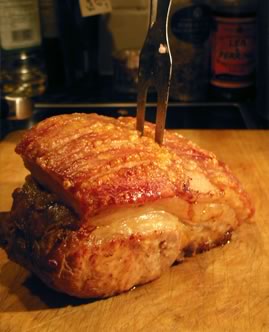Our story began over 75 years ago when Joshua Hirst bought his first pedigree Tamworth pig, Jemima. This was the beginning of the Berkswell Herd. His son Charles Wheatley continued to expand and diversify the pedigree Tamworths within his herd, importing and exporting bloodlines, giving new life to this rare breed in troubled times.
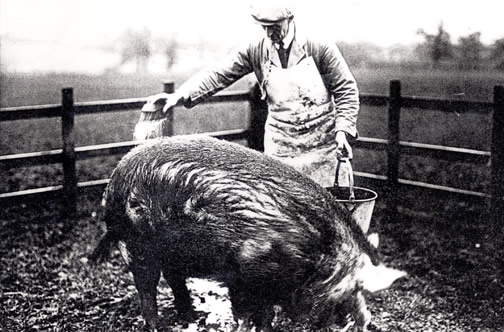
Ann Wheatley-Hubbard recognised the need for this approach across the nation and set up the Rare Breed Survival Trust. Moving the herd to Wiltshire in 1963 she maintained the same drive to preserve the Rare Breeds. She reared her herd assiduously until it made up ten per cent of all the Tamworths in the UK.
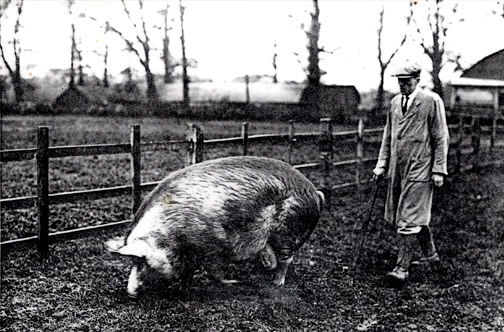
Now five generations on from Joshua Hirst, we are still dedicated to showing people why the Tamworth, Sussex, and Hampshire Rare Breeds provide the most natural, balanced (and tasty) meats in our extensive conservation environment.

In the same way that every part of the farm contributes to the meat we produce, every member of our immediate family has been involved with some aspect of the farm's everyday work - whether it's out ragwort picking in the summer evenings or defrosting the water pipes on chilly February mornings.
Our farmland is maintained using the same traditional values that we employ in our livestock rearing. Our watermeadows, once used for grain production, have been returned to their original native grassland. Now they soak in the old irrigation channels running from the neighbouring River Wylye.

Eight miles of grass margins snake over the farm. At nineteen feet wide, they keep crop cultivation and harvesting removed from hedgerow environments while providing a natural shelter for wildlife.
At the top end of the farm, the rich grass and wild flower beds on the slopes of our valleys and downlands have thrived from the total lack of arable cultivation. Our cattle reap the benefit - they are allowed to graze on the downlands in complete freedom, and they enjoy an enviable amount of room (about one acre per animal).

The woodlands that are scattered all over the farm are an essential aspect to our environment. They are home to an abundance of wild game and they also grow materials used in old-fashioned practices such as the growth of hazel thatching-splints. A reassuring fact in an over-modernised world.
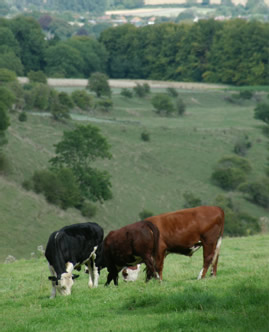
The Tamworth pig's closeness to the old English Cottage pig has inspired and prompted us to treat it as such since we first picked up a bucket. From the older sows to new-born piglets, the breed's ability to live out in the English countryside all year round gives them the most extensive lifestyle possible.
We allow them the freedom to root through the ground, whether in grass or woodland. It keeps them attuned to their wild practices and adds roots and bulbs to their diets.
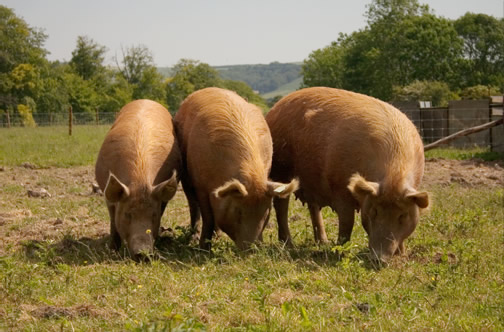
We are out in the fields with our pigs every morning and afternoon, every day of the year. As soon as the piglets emerge from their "Arcs" they learn to accept our human presence. This keeps them far calmer when it comes to moving and handling them. It also allows us to walk amongst them spotting any illnesses or problems as soon as they arise.

Our animals thrive outdoors, so we have no need to add growth promoters or antibiotics to their food. This means the animal maintains the same fat/meat consistency and gives the food the same nutritional values as they would in the wild.
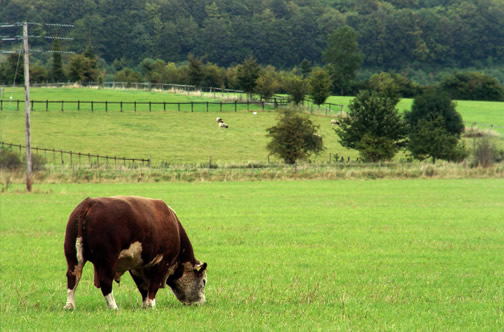
The only time the animals leave the farm is to go to slaughter -travelling only 16 miles down the road. We keep them as calm and comfortable as possible on this journey because the happier and more relaxed an animal is when it goes to the knife, the better quality the meat. Everyone involved in the process treats the animals in the best manner, continuing our empathetic husbandry.
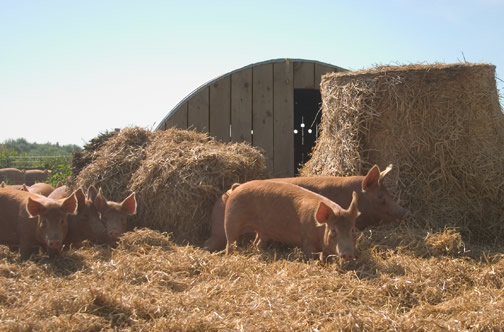
Having invested so much time and care in our animals' husbandry, we have no intention of letting standards slide when it comes to the chopping block!
We encourage all our suppliers to hang the meat for the optimum length of time. Rather than rush it into the food chain, we have the experience to know that if you hold it back for a while and let the meat fibres set it gives a unique tenderness and taste.
